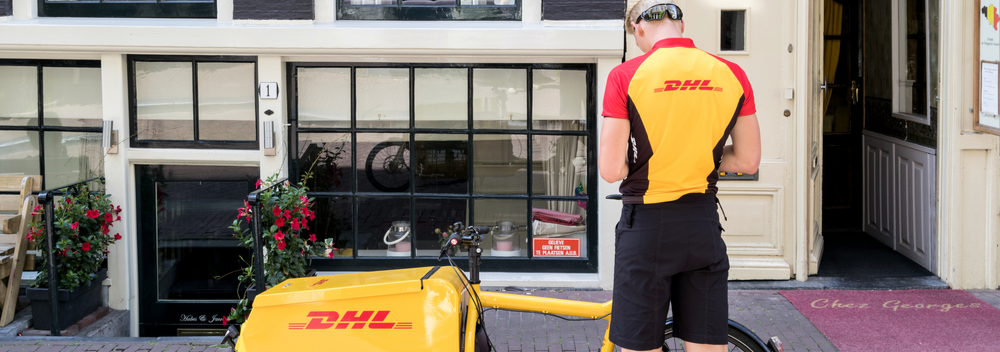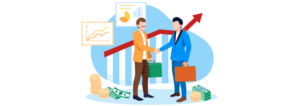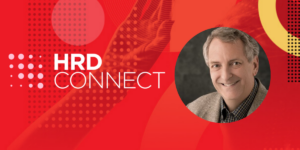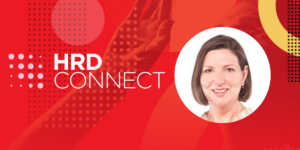DHL Supply Chain: driving efficiency, innovation and culture
- 7 Min Read
Lindsay Bridges, DHL Supply Chain’s senior vice president of HR, UK and Ireland, details how the company works to engage every layer of its workforce
- Author: Fin Murphy
- Date published: Jul 12, 2021
- Categories

“Logic will get you from A to B. Imagination will take you everywhere,” Albert Einstein once said. Many professionals would agree with the sentiment; in research conducted at the end of 2020, Deloitte found that ‘increasing innovation’ was a top three priority for senior executives and individual workers surveyed.
As witnessed with the pivot to remote working and hybrid working, embrace of new technology platforms, and cultivation of attributes like agility and resilience, leaders would be hard pressed to find professionals and organisations that haven’t seen innovation in their workplace. Indeed, according to McKinsey, companies surveyed had achieved ‘three to four’ years’ worth of change in digitisation and internal operations in just a few months.
How does this look on an organisational level? In what ways can leaders adopt innovation for the better, and build on achievements for the future?
In this article, Lindsay Bridges, DHL Supply Chain’s senior vice president of HR, UK and Ireland, details how the company responded to new conditions, engaged every layer of its workforce, and improved its practices for the time ahead.
As one of the leading contract logistics providers, DHL Supply Chain is relied upon to deliver a consistent and efficient service to a range of customers, from SMEs to multinational firms. However, with the immense disruption wrought by the pandemic, the company faced a host of fresh challenges to its staff, operations, and prospects as demand rose in an unpredictable manner.
Responding to widescale disruption
With offices, hospitality venues, and other places of businesses shuttered as the pandemic took hold, it could be assumed that economic demand took a severe hit. However, Bridges highlights how DHL Supply Chain’s service experienced an unpredictable ebb-and-flow compared to other businesses.
“Our UK business, the warehousing and contract logistics side of DHL, has customers from a wide array of sectors – some have been incredibly busy through the lockdown period, and some have almost stopped.
“For example, we do a lot of work in the aviation and travel industry, which has been reduced to a much smaller volume. The same goes for our drinks distribution which was also severely impacted due to the reduction in hospitality. On the other hand, our life sciences business has been very busy where we’ve supported the government around testing kits, the provision of PPE and the Nightingale hospitals and our grocery retail saw record volumes.
“There has always been a level of agility in our business. Traditionally, we’d always have a very strong peak season at the back end of the year, so it’s not unusual for us to jump from a steady operation to managing large peaks.
“What was unique about the last twelve months was the degree of unpredictability and the extremes that we’ve seen, coupled with the fact that we’ve seen different requirements depending on job role across our workforce; 80 to 90% of our workforce has been at work in our warehouse and transport operations, while some senior leaders and our functions have been deliberately asked to work from home to mitigate any spread of the virus, and to protect those people who need to physically attend work.”
Increasing communications to secure good performance
From informal catch ups to responsive feedback, many leaders have found that clear and consistent communication has been vital for engaging and motivating staff under immense pressure. Bridges outlines DHL Supply Chain’s approach and its effects.
“We really ramped up our communications over the last twelve to eighteen months, and we intend to continue that, utilising a communication app that our colleagues can download on a smartphone. For instance, with our dedicated communications around what we’re doing on Covid, we recently sent out our 100th announcement, which was a very big deal for a relatively small task force. It shows the level of communication we have been managing.
“Getting those communications out to people and giving people opportunities really mattered. During the first lockdown last year, we redeployed around 1,400 colleagues into other parts of the business. That showed our staff that they can play their part, even if the operation they were working in was lower in volumes, and that they could still contribute.
“We’ve been working on our culture at a senior leadership level for the past couple of years to ensure that no matter where you work in our wide and varied business, you have what we might term ‘owners’ mindset’. You’re looking at the whole organisation, rather than the bit that you’re necessarily responsible for.”
Encouraging collaboration to drive efficiency
Having discussed how communication can help with motivation, Bridges goes on to explain how DHL Supply Chain has fostered a culture where staff members willingly go the extra mile.
“Over the last twelve to eighteen months, there have been lots of examples of people really going out of their way to work with others in the business, and to support and share. A great example was last year, in the southwest of England, where we had a big need for one of our supermarket retailers, which was under extreme pressure.
“We had a number of colleagues who came in work to support it, from our management through to warehouse colleagues. Everyone stepped up where it was needed, almost without question, and there were some examples of people who travelled to different parts of the country where their skills were needed, really going above and beyond to help across sites and across functions. That’s really been part of the culture that we’re driving and one of those real benefits in the pandemic that we want to continue to leverage.”
Improving talent strategy through innovation
Outside of the pandemic, recruiting, retaining, and developing staff members has always been a priority for DHL Supply Chain, Bridges explains.
“In the last couple of years, we’ve been asking ourselves: how can we make the recruitment of colleagues more effective? Can we take bias out of that process? How do we make it more efficient?
“You can look at some of the processes that we put in place around virtual job try-outs for warehouse colleagues to take bias out of the screening process. We have also introduced AI to support the scheduling of interviews, as if we can automate as much as that as possible then we’re more efficient.”
“Within our graduate hiring, we’ve taken quite a deep look from a D&I perspective, to make sure that our doors are as open as they can be, and make sure the process is inclusive.
“This year, our graduate hiring went up to 34% of offers to ethnic minority groups, which is a big improvement from 17% last year; and this is still far better than the national average. We’re really very proud of that.”
Innovation at the core of successful strategy
Lastly, Bridges explores how innovation links together several aspects of strategy – communication, D&I and culture – to help build a positive culture.
“The other area where we are doing very well in digitisation is in the communication space. 57% of our workforce in the UK – that’s about 21,000 people – are now signed up to our internal app, which is like an internal social network.
“We had over 20,000 likes on posts in just the last month alone. It’s hugely popular across the business. We had a diversity and inclusion week within our business, and the social board was full of colleagues from all around the UK and Ireland, posting what we were doing to celebrate D&I in their in their operations. That was so exciting and a great picture of things to come.”







